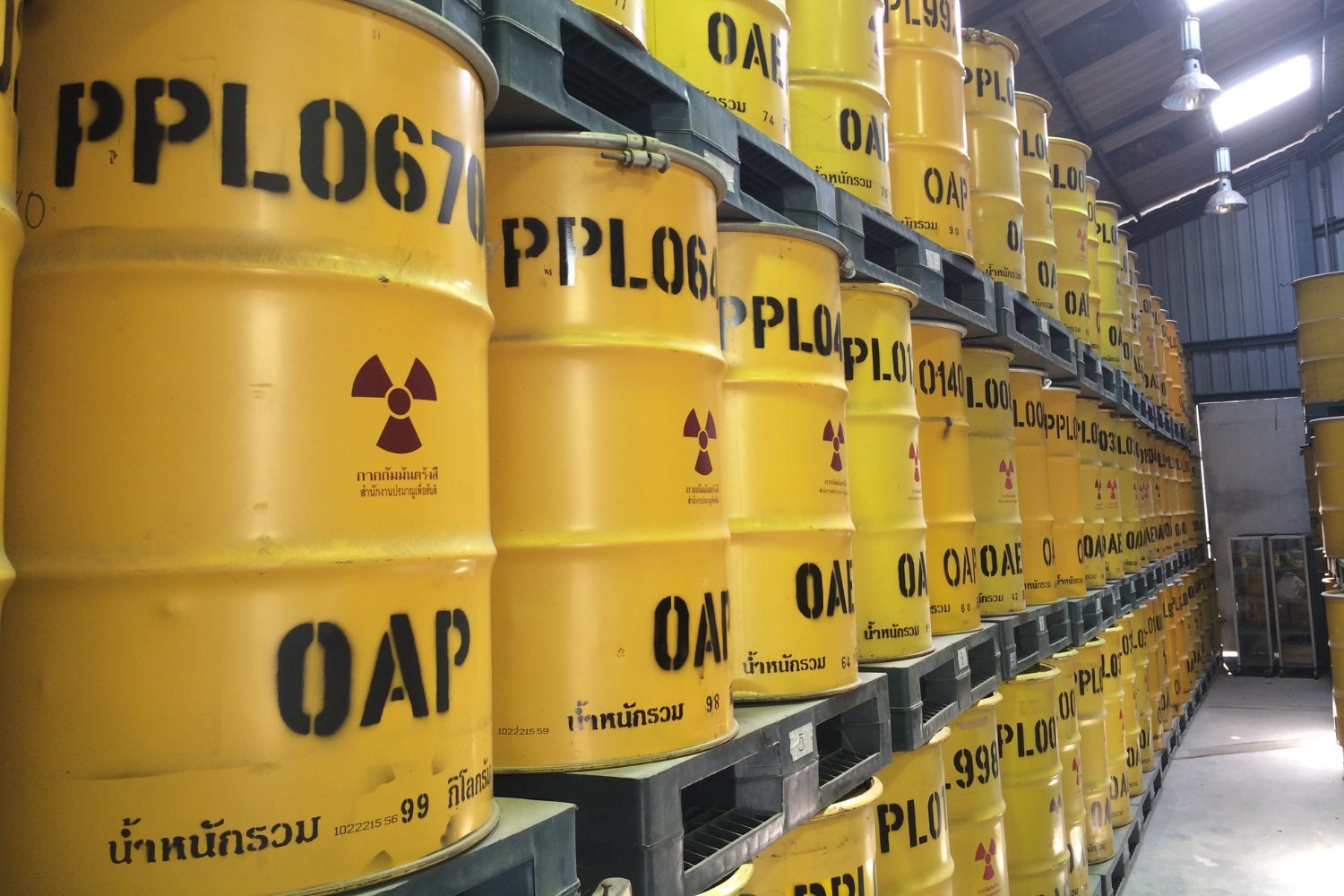
Turning Nuclear Waste into Treasure: A Novel Battery Design Shows Promise
Nuclear power, a cornerstone of modern electricity generation, presents a complex duality. On one hand, it offers a compelling alternative to fossil fuels, significantly reducing greenhouse gas emissions and contributing substantially to energy security. In the United States, nuclear power plants currently generate approximately a fifth of the nation’s electricity. Moreover, advancements in reactor technology have dramatically improved safety standards.
However, the Achilles’ heel of nuclear power lies in the hazardous waste it produces. This radioactive byproduct, a consequence of the nuclear fission process, requires careful management and long-term storage to prevent environmental contamination and potential harm to living organisms. Scientists have long grappled with the challenge of safely and effectively managing this waste, primarily focusing on secure storage solutions. But what if, instead of merely storing it, we could transform this hazardous waste into a valuable resource?
Inspired by this innovative concept, a team of researchers at Ohio State University has developed a groundbreaking nuclear battery powered by the very waste that plagues the nuclear industry. This novel approach, recently published in the journal Optical Materials: X, demonstrates the potential to harness the energy inherent in nuclear waste to power small electronic devices.
The core of this battery lies in the interaction between scintillator crystals and gamma radiation. Scintillator crystals are materials that possess the remarkable property of emitting light when they absorb radiation. Nuclear waste, a rich source of radioactive isotopes, naturally emits gamma radiation. When exposed to this radiation, the scintillator crystals convert the invisible gamma rays into visible light. This light, in turn, is then captured by a solar battery, which converts it into electrical energy.
"We’re harvesting something considered as waste and by nature, trying to turn it into treasure," said Raymond Cao, lead author of the study and director of Ohio State’s Nuclear Reactor Lab. His statement encapsulates the fundamental shift in perspective that underlies this research: viewing nuclear waste not as a liability, but as a potential asset.
In their experimental setup, the researchers tested the battery prototype using two common radioactive byproducts of nuclear reactors: cesium-137 and cobalt-60. These isotopes are significant contributors to the overall radioactivity of nuclear waste, and their successful utilization in this battery design represents a crucial step towards waste valorization.
The results of the initial experiments were promising. When powered by cesium-137, the battery produced 288 nanowatts of power. Using cobalt-60, the power output increased significantly to 1.5 microwatts. While these power levels may seem modest, the researchers emphasize that they are sufficient to power small sensors and microchips.
To put these numbers into perspective, a standard 10-watt LED light bulb requires 10 million microwatts of power. However, the Ohio State team argues that their approach has the potential to be scaled up to produce significantly higher power levels, potentially reaching the watt scale or even beyond.
The researchers envision a range of applications for these nuclear batteries, particularly in environments where nuclear waste is produced and stored. One compelling possibility is the deployment of these batteries in nuclear waste storage pools to power sensors that monitor water quality, temperature, and radiation levels. The self-powered nature of these batteries would eliminate the need for external power sources and routine maintenance, making them ideal for remote and hazardous environments.
"The nuclear battery concept is very promising," said Ibrahim Oksuz, co-author of the study and an Ohio State mechanical and aerospace engineer. "There’s still lots of room for improvement, but I believe in the future, this approach will carve an important space for itself in both the energy production and sensors industry."
The researchers also investigated the influence of the scintillator crystal structure on the battery’s energy output. Their findings suggest that larger crystals, with their greater surface area, are able to absorb more radiation and consequently emit more light. Similarly, a solar battery with a larger surface area can capture more light and generate more electricity. These insights highlight the importance of optimizing the design and materials used in the battery to maximize its performance.
"This two-step process is still in its preliminary stages, but the next step involves generating greater watts with scale-up constructs," Oksuz explained. The researchers are actively exploring strategies to increase the size and efficiency of the battery components to achieve higher power outputs.
While the current cost of scaling up this technology remains a significant hurdle, the researchers are optimistic that further research and development will lead to cost-effective solutions. They acknowledge that more work is needed to refine the design, optimize the materials, and improve the overall efficiency of the battery.
Despite the challenges that remain, this study represents a significant step forward in the quest to find innovative ways to manage nuclear waste. It demonstrates that, with sufficient ingenuity, one person’s waste can indeed be another person’s treasure – or in this case, a sustainable source of energy. The potential for transforming nuclear waste into a valuable resource has profound implications for the future of nuclear power and the environment. By harnessing the energy locked within this waste, we can move closer to a more sustainable and circular economy.
